Nestled within Vietnam’s lush Huong Tich mountains, about 60 kilometers southwest of bustling Hanoi, lies a mystical realm known as the Perfume Pagoda, or Chùa Hương. This spiritual haven, steeped in legend and contemporary devotion alike, offers a unique journey through both the natural world and the soulful depths of Buddhism. Yearly, countless pilgrims and visitors traverse its verdant trails and serene waterways to seek blessings and experience a profound connection to this ancient site. Join us as we delve into the historical, architectural, and cultural marvels that make the Perfume Pagoda a truly captivating destination.

Historical Background
The origins of the Perfume Pagoda trace back over 2,000 years with its renowned Huong Tich Cave, but the significant construction began during the Le Dynasty in the 15th century, marking the inception of its rich religious and cultural history shared today.
Origin and Construction
The Perfume Pagoda, as it stands today, primarily began its construction journey in the 15th century under the reign of King Le Thanh Tong. This marked the transformation of a once simple site into a sprawling complex of temples interwoven with natural landscapes. Originally, it was a modest shrine, but the kings following King Le Thanh Tong expanded it substantially.
During King Le Hy Tong’s tenure, significant shifts occurred. In 1686, under his rule, the Perfume Pagoda saw the construction of terraces and stone steps that ascended into the mysterious embrace of the limestone mountains, solidifying its status as a revered site. The architectural evolution continued robustly throughout the 18th and 19th centuries, drawing diverse influences from Buddhist symbolism reflected in intricate carvings and statues found within its confines.
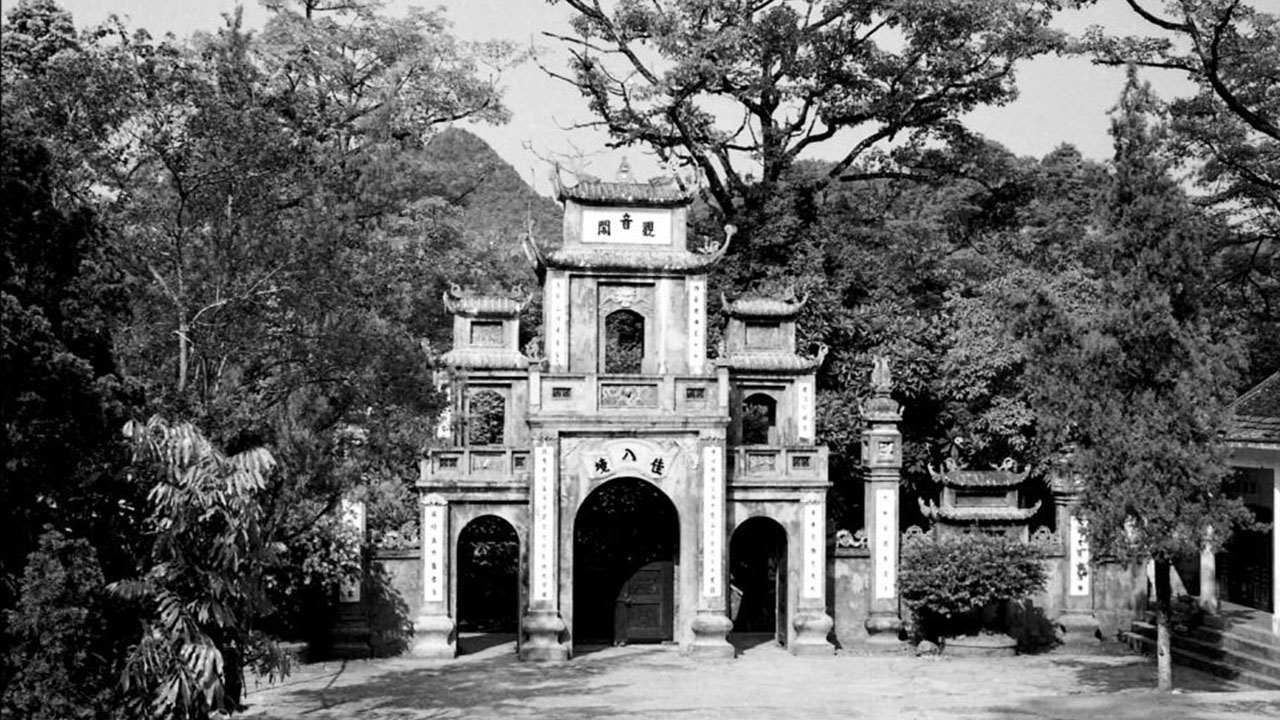
Noteworthy structures that emerged include the Thien Tru Pagoda “Pagoda of the Kitchen,” known for its striking architectural style that blends seamlessly with the surrounding lush greenery. This pagoda, in its unique design, melds the aesthetic elegance of Vietnamese artistry with a sturdy practicality that has withstood the test of time. The overall construction mirrors a journey from the placid waters of the Yen River all the way to the summit at the Huong Tich Cave, promising spiritual exploration and tranquility.
Legends of the Pagoda
Embedded within the Perfume Pagoda’s history are compelling legends that enrich its mystery and allure. One prominent tale narrates the discovery of the Huong Tich Cave by a devout monk over two millennia ago. It is said that this monk named the area after a famed Tibetan mountain where the Bodhisattva Quan Am once stood, linking the pagoda to divine roots.

The locals believe the spirit of Quan Am came to reside in the cave, making it a portal for worshippers seeking mercy and blessings. These narratives shape the cultural ethos surrounding the pagoda, forging a mystical tapestry, weaving historical facts with folklore.
Another captivating legend speaks of the “First Cave under Heaven,” a name bestowed upon Huong Tich Cave for its unparalleled beauty and spiritual significance. This myth is sustained through centuries of oral and written traditions, underscoring the cave’s perceived sanctity and its role as a celestial conduit. Pilgrims venture here not merely as tourists but as part of a sacred ritual, engaging with stories passed down through generations.
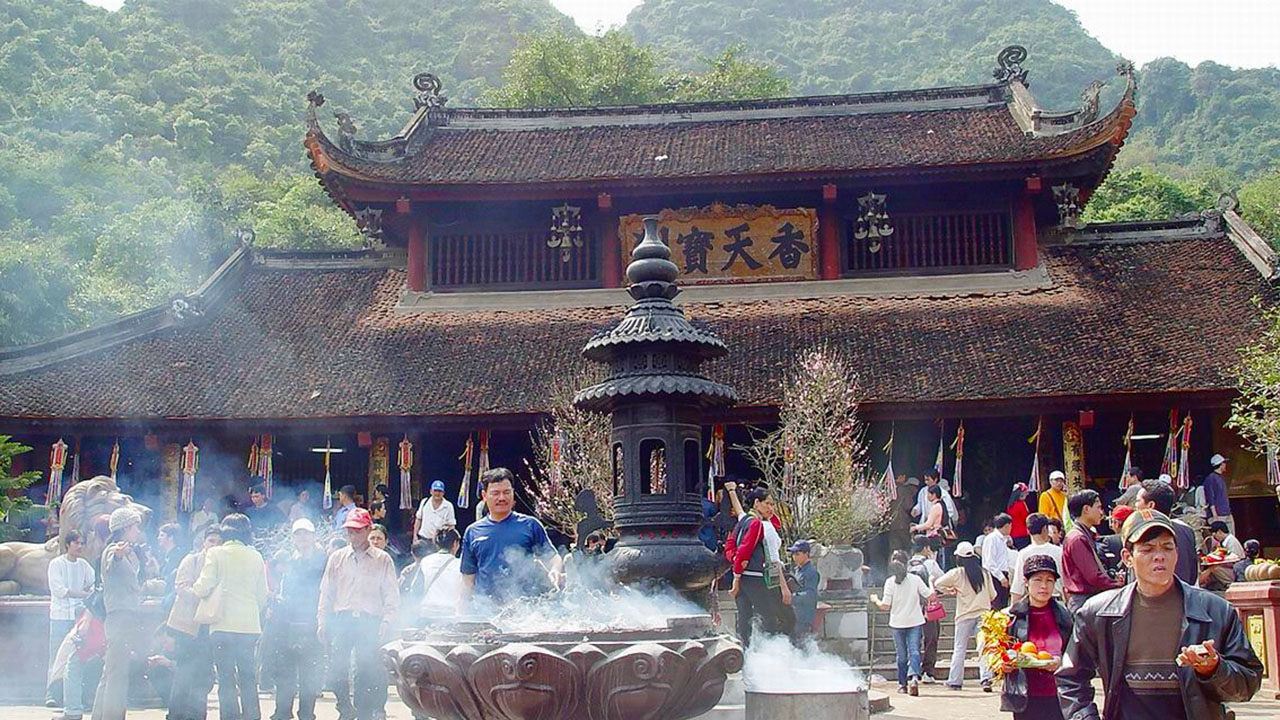
The legends not only blend the spiritual with the geographical but also offer a lens through which visitors can view the Perfume Pagoda as a living testament to Vietnam’s enduring cultural identity. In capturing these tales, the pagoda transcends from a mere historical site to a living monument breathing the very essence of Vietnamese spirituality.
Architectural Features
Building upon its formative history, the Perfume Pagoda is renowned for its stunning architecture that seamlessly weaves cultural heritage with natural beauty. This nexus between history and design creates an unparalleled pilgrimage and travel site.
Huong Tich Cave
The Huong Tich Cave, often regarded as the heart of the Perfume Pagoda complex, is a masterpiece harmonizing human craftsmanship with nature’s unrestrained beauty. As you venture inside, the cave unfurls its stone-sculpted wonders stalactites and stalagmites dance in a mesmerizing play of light and shadow, each telling the story of eons past.
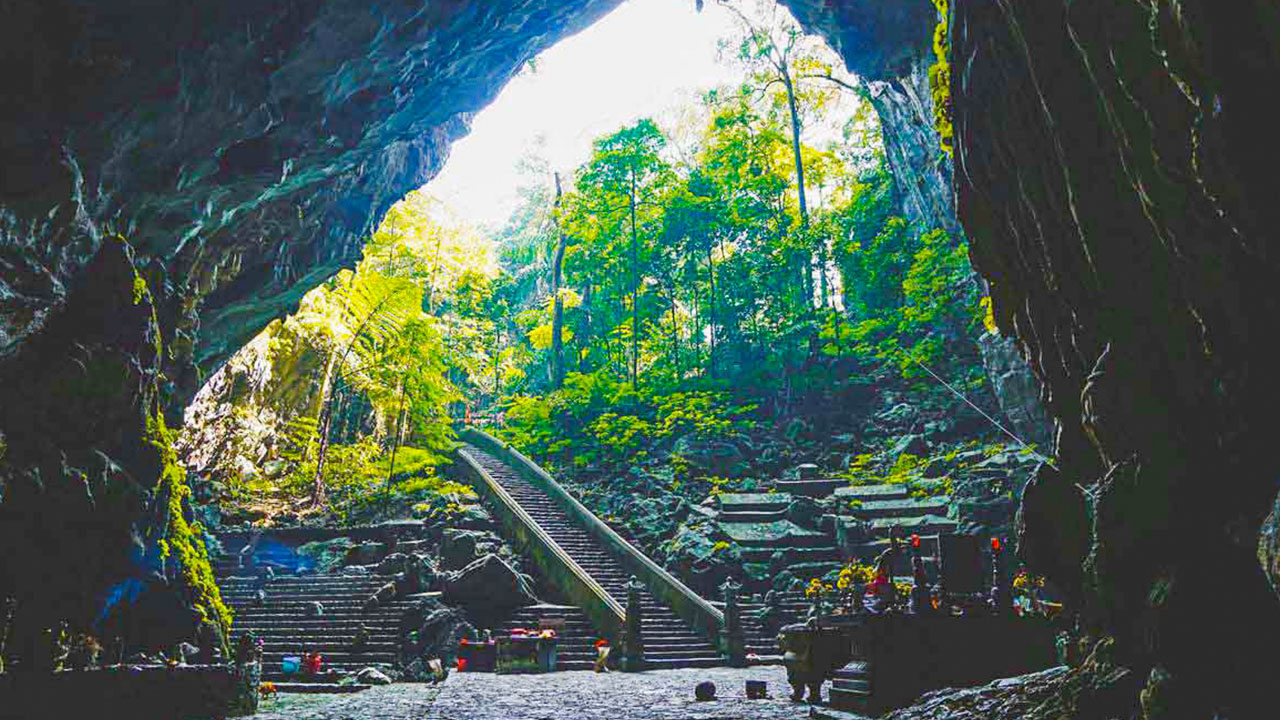
This natural grandeur is enhanced by human elements: shrines meticulously carved into the rock offering an interactive tableau of Buddhist iconography. Limestone formations in the cave a stunning myriad of shapes and textures resemble traditional Buddhist symbols, such as lotus petals or dragons exuding power and serenity.
An ethereal glow pervades the cave, accentuated by flickering candles and lanterns casting a warm halo, emphasizing the spiritual ambience. This lighting creates an inviting haven for meditation, encouraging visitors to reflect deeply in this sanctuary of peace. It’s a venue that transcends time, urging one to pause and absorb its serene aura.
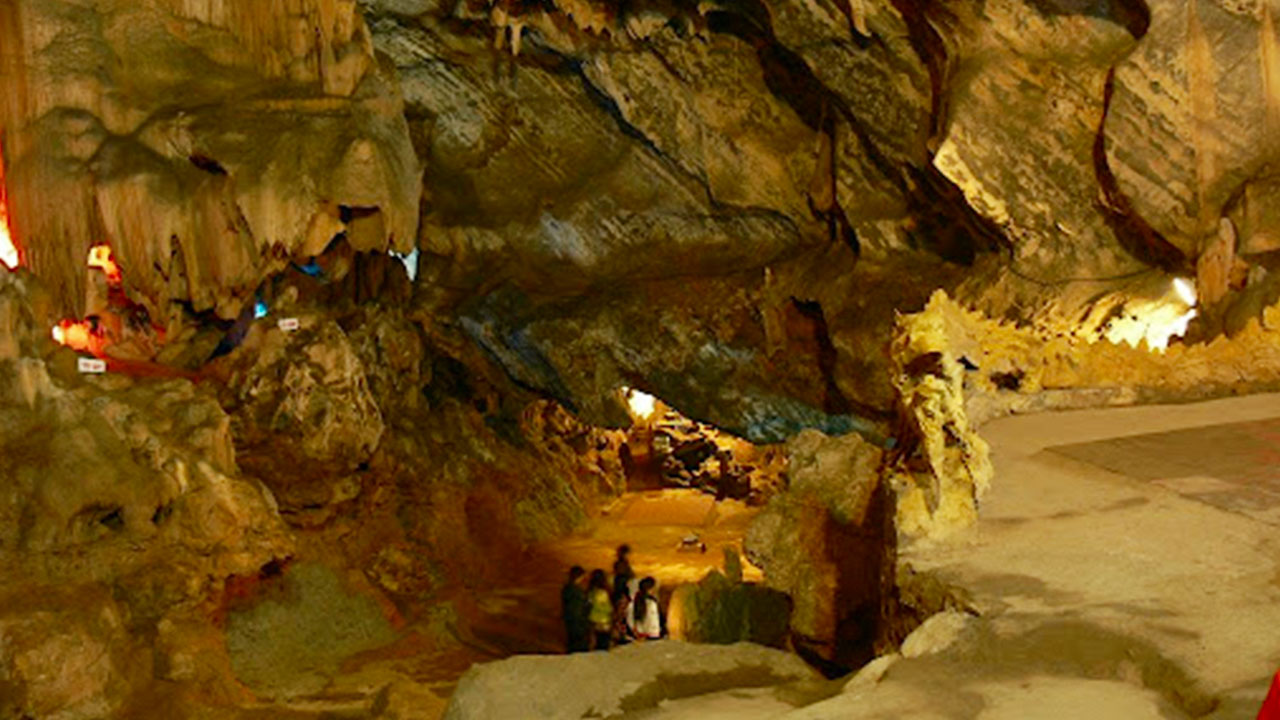
Annually, during the Perfume Pagoda Festival, Huong Tich Cave becomes the focal point for spiritual activity. Thousands gather, engaging in meditative practices and rituals that elevate the natural energy of the cave. Through its natural and architectural splendor, Huong Tich Cave retains an ageless resilience, a bastion of faith and reflection amid the ever-changing tide of human endeavors.
Main Temples and Shrines
Within the Perfume Pagoda complex, various temples and shrines stand as masterpieces of religious art and architecture, reflecting a unique cultural heritage. Among these, Thien Tru Pagoda holds a significant place with its characteristic Vietnam-inspired architectural style, showcasing a cascade of sloping roofs outlined against a backdrop of verdant landscapes.
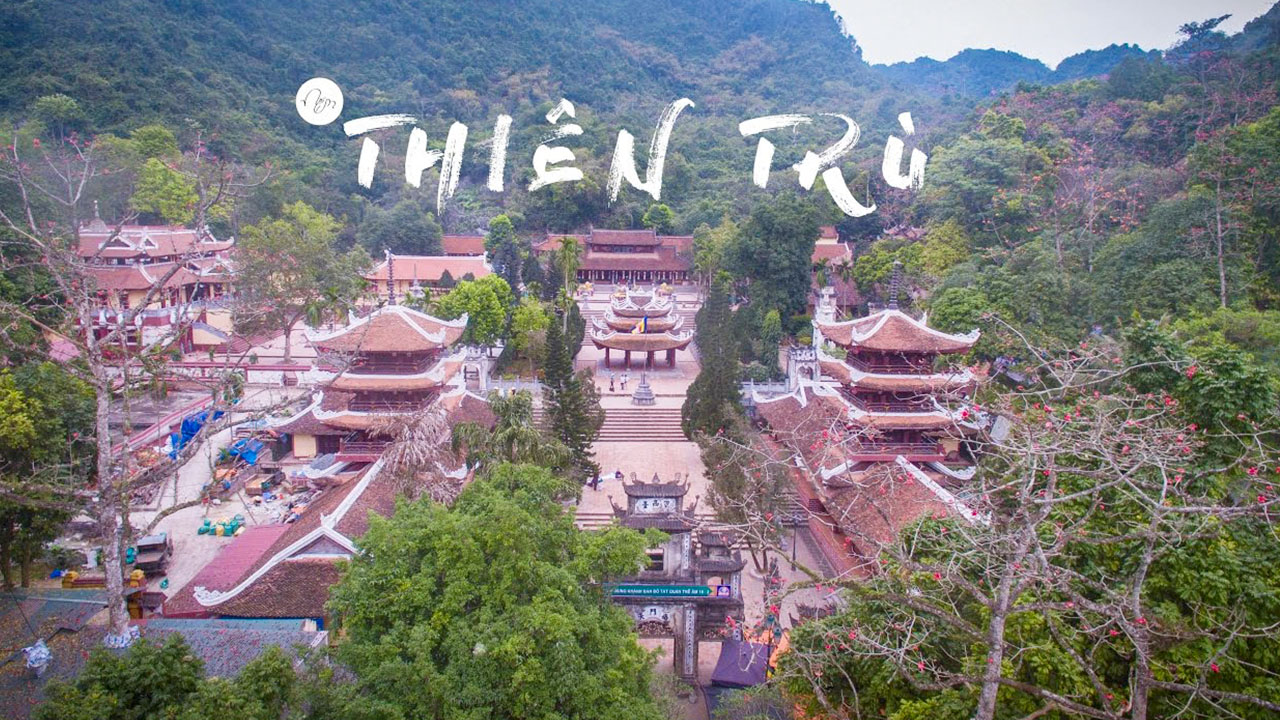
Each temple meticulously integrates its construction with the surrounding terrain, showcasing traditional elements like carved wooden beams and intricate stonework etched with Buddhist motifs. Giai Oan Pagoda, or the “Pagoda of Releasing Suffering,” serves as a space where pilgrims seek purification. Its rich carvings and statues create an environment mirroring the spiritual journey towards enlightenment.
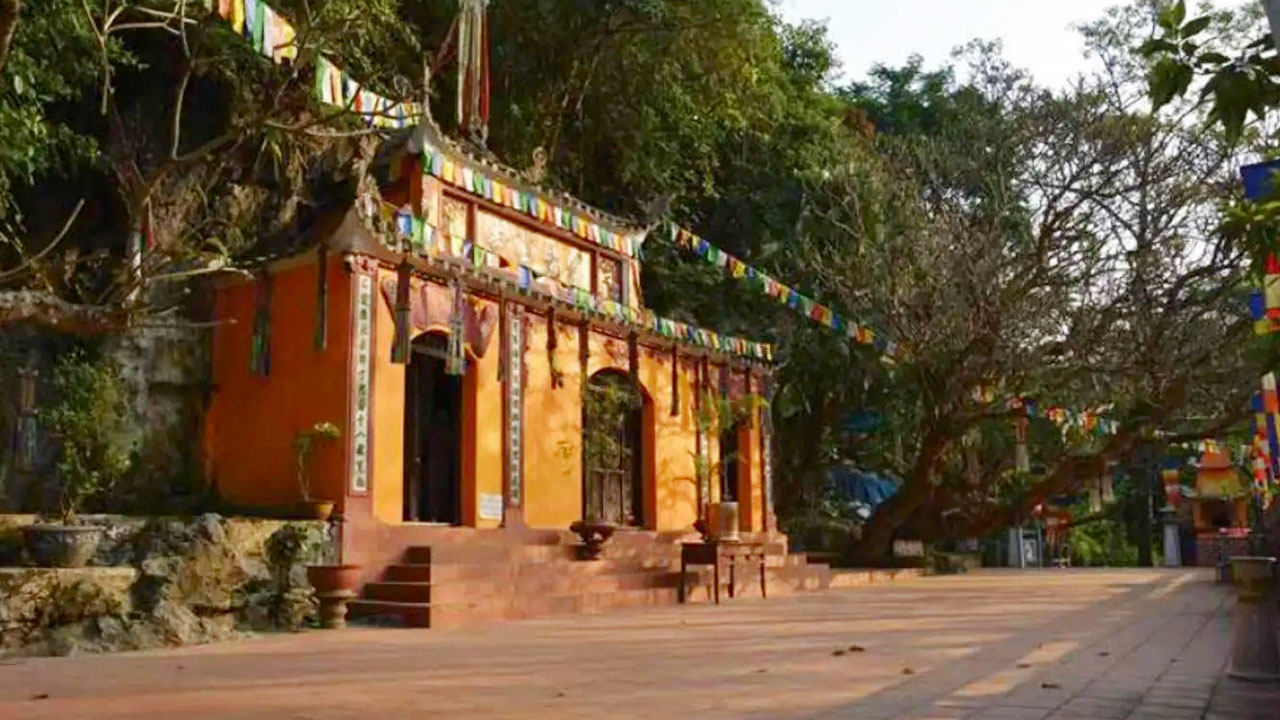
Furthermore, the Bich Dong Pagoda, though comparatively lesser-known in this region, attracts visitors due to its casa-like appearance and legends linked to ancient monks seeking peace. Its aesthetic and spiritual appeal lies in the blend of its artistic elegance and serene location.
A journey through these shrines is not simply an architectural exploration but an embarkation on a cultural and spiritual quest, embodying centuries of Vietnamese piety and craftsmanship. Each step along the temple paths leads deeper into Vietnam’s religious psyche, allowing visitors to witness firsthand the imprints of its spiritual legacy.
Natural Surroundings and Landscape
The Perfume Pagoda’s setting within the lush Huong Tich Mountains sets the scene for a breathtaking interplay between natural splendor and spiritual calm. Here, towering limestone cliffs rise dramatically above a valley cut by the meandering Yen River, offering a vista that beckons both the devout and the curious explorer alike.
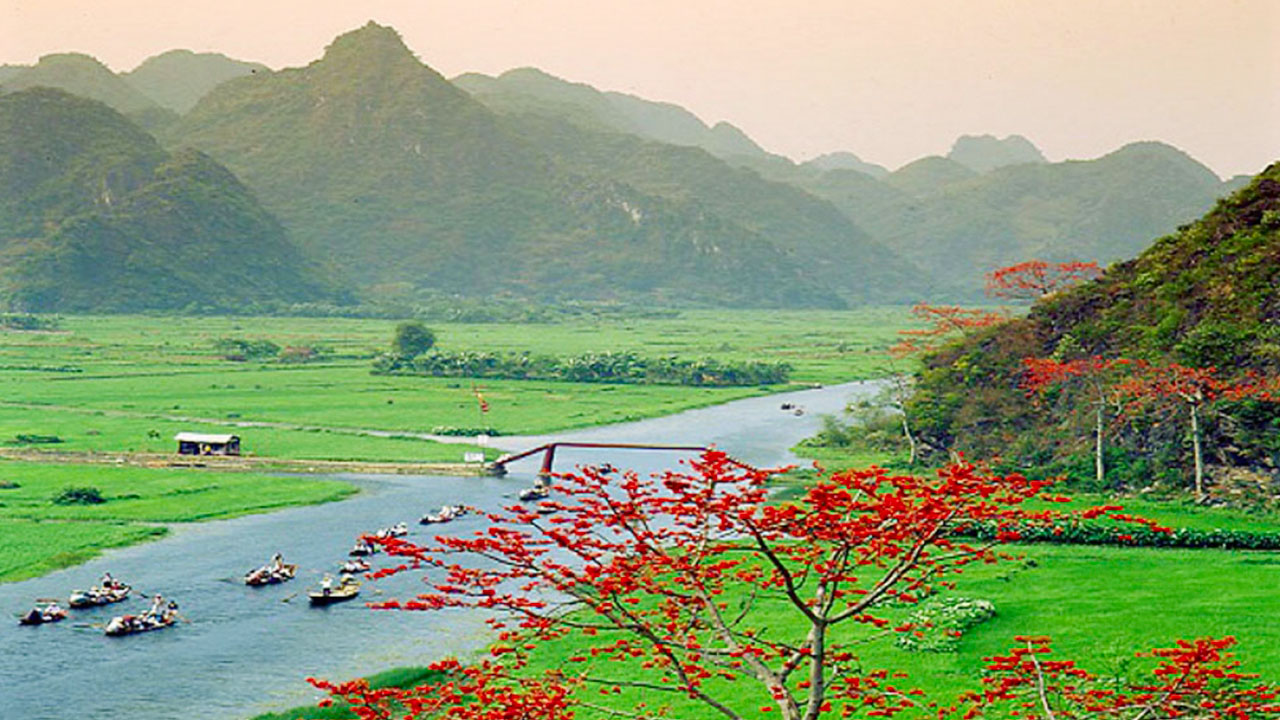
Upon setting out by boat along the Yen, visitors can take in the serene landscape verdant forests standing against stony backgrounds, their reflections painting a surreal scene upon the water’s surface. This aquatic entrance acts not only as a natural corridor leading to the divine but also as a meditative journey, inviting reflection and tranquility.
The path leading up to Huong Tich Cave and the other shrines is lush with vegetation that includes a variety of ferns, flowers, and ancient trees, creating a natural canopy along the walkways. In spring, the hillsides explode with color as seasonal blossoms unfurl, replacing the pageantry of clouds with a vibrant floral tapestry.
Such landscapes serve as both a physical and spiritual backdrop for the pilgrimages made here, encapsulating the spirit of peace and contemplation intrinsic to Buddhist practice. It’s a dual testament both to nature’s indomitable creativity and Vietnam’s commitment to preserving these sacred natural environs making every visitor’s journey an exquisite portrayal of harmony between humanity and nature.
Cultural Significance
Revered for its architectural majesty blending with the natural world, the Perfume Pagoda is more than merely a sight of historical intrigue. It holds a profound place in Vietnamese spiritual and cultural landscapes.
Role in Vietnamese Buddhism
The Perfume Pagoda assumes a significant role within Vietnamese Buddhism, acting as a beacon of faith and religious continuity over the centuries. As a convergence point of spirituality, its temples and pagodas orchestrate a symphony of religious practices that resonate with Vietnamese people. Here, Buddhism isn’t merely a religious identity; it’s a living way of preserving traditions passed down amongst generations.
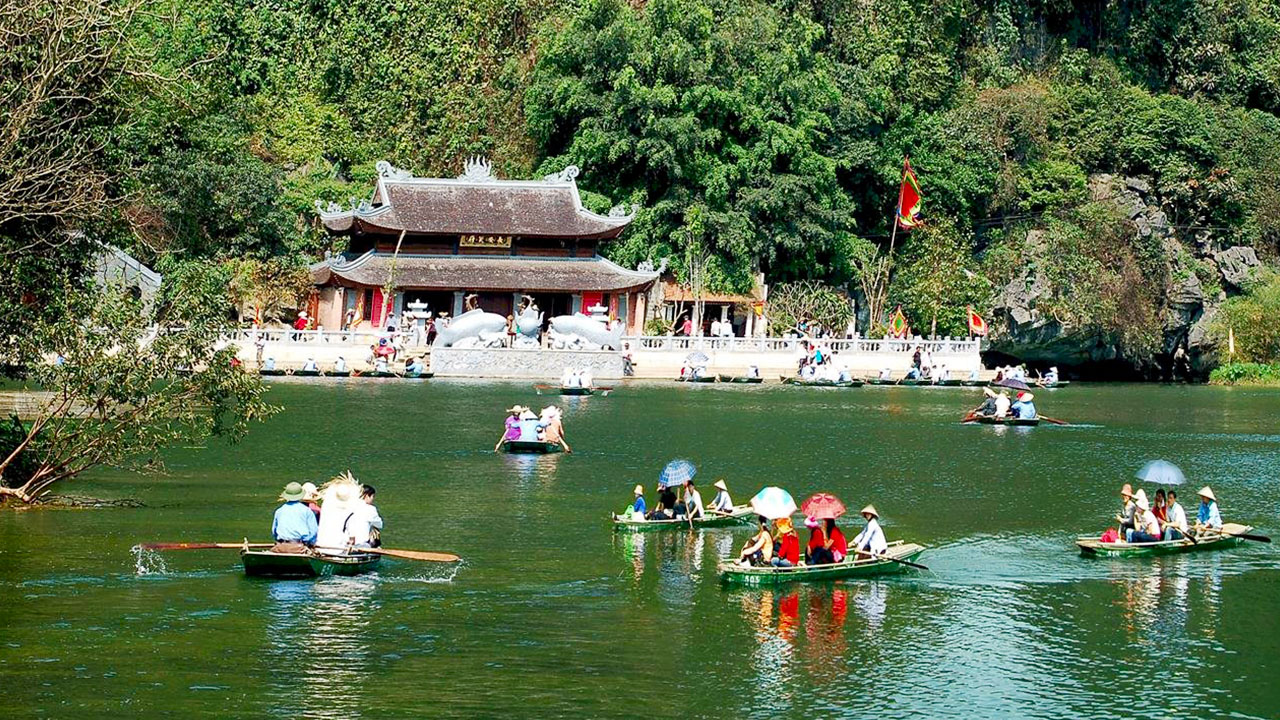
Buddhist rituals practiced here reflect the teachings of compassion and enlightenment, underpinned by the belief in Avalokiteshvara, the revered Buddhist Bodhisattva. This connection is seen in the symbolic Buddhist statues that dot the complex, each representing the interwoven fabric of daily life and spiritual aspirations.
Important annual ceremonies pivot around the lunar calendar, including rituals dedicated to fortitude against misfortunes. The architecture and their intricate designs display metaphorical tales of Buddhist philosophy etched in stone and wood, making them not just structures but living narratives.
Vietnamese Buddhism is steeped in rich storytelling, and the Perfume Pagoda serves as a narrative bridge that bonds the past with the present, fostering a space where religious reflection and community life intermingle harmoniously.
Connection to Local Festivals
The Perfume Pagoda is not only a site of religious reverence but also a cultural hub, intimately woven with local festivals that breathe life into its spiritual essence. The most notable is the Perfume Pagoda Festival, a pivotal yearly event beginning on the 6th day of the first lunar month, attracting multitudes of devotees.

This festival is a vibrant display of faith where sacred rituals, chants, and prayers fill the air, symbolizing both personal and communal quests for purification and prosperity. Cultural performances, alongside traditional music, can be heard near every corner, offering visitors a cultural feast to match the spiritual one.
Other local events reflect agricultural cycles and their link to deities worshiped within the pagoda complex. Celebrations held here often incorporate folk dances and theatrical performances centered on historical and mythical tales, adding a layer of cultural extravagance to the religious unity observed.
Engagement with these cultural festivities allows visitors to appreciate the local traditions intimately tied to the pagoda, highlighting the enduring relationship between Vietnamese cultural heritage and the spiritual practices upheld within the Perfume Pagoda’s sacred precincts.
Pilgrimages and Visitor Experience
Beyond its cultural significance, the Perfume Pagoda stands as a distinguished destination for pilgrimage, providing a spiritually enriching experience against its stunning backdrop of temples and landscapes.
Huong Pagoda Festival
The Huong Pagoda Festival is a centerpiece of spiritual expression for Vietnamese Buddhists, drawing participants from all corners of the nation. As pilgrims embark on their journey, the serene boat excursion along the Yen River sets the tone for introspective reflection and anticipation. Early morning mists often greet these travelers, lending an air of mystery and wonder to the journey.
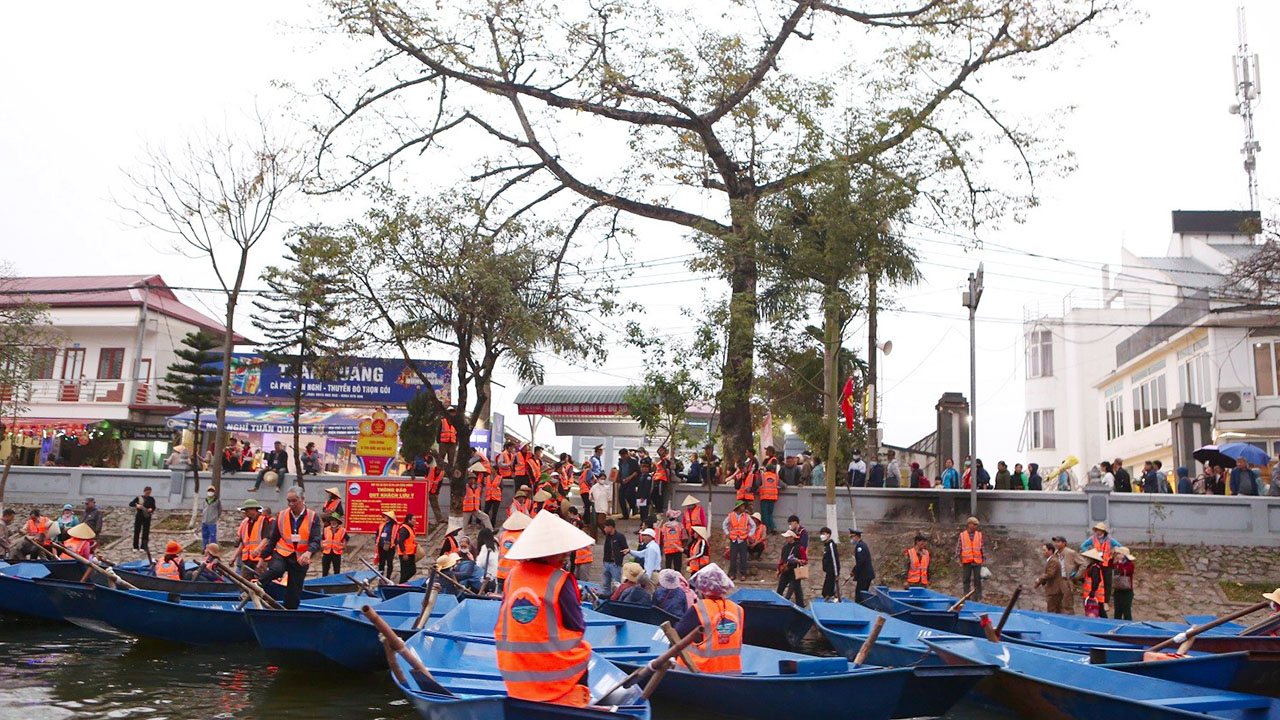
Upon disembarking, a palpable community spirit envelops those bound for Huong Tich Cave. Whether traveling alone or in groups, pilgrims approach this venture with mindfulness, each footfall resonating with the collective desire for spiritual ascent.
Crowds flock to the various temples en route, their offerings and incense creating a sensory tapestry. The festival’s duration, extending from the first to the third lunar month, ensures a continuous ebb and flow of participants, each imbuing the pagoda with renewed energies and affirming its status as a spiritual linchpin in Vietnamese daily life.
Activities for Visitors
Visitors to the Perfume Pagoda during the festival or at any other time are met with a plethora of engaging activities that enrich their experience. Beyond the religious offerings and rituals, visitors can partake in:
- Nature Walks: Trails winding through the complex offer views of lush landscapes and unique flora, ideal for those keen on capturing the natural beauty that frames the spiritual setting.
- Cultural Immersion: Participating in ceremonies or simply observing provides insight into ancient traditions kept alive through enduring practices and expressions of faith.
- Sampling Local Cuisine: At the festival markets, visitors can relish local specialties like che kho (sweet mung bean pudding) and thit nham (marinated mountain goat), each dish telling a tale of regional flavor and culture.
- Artisan Crafts: Stalls selling handcrafted goods enable visitors to take home a piece of the Pagoda’s artistry, be it a carved Buddha or locally woven textiles, serving as tangible reminders of their journey.
- Photography: With its scenic vistas and architecturally stunning backdrops, the Pagoda offers plenty of opportunities for photography enthusiasts to capture moments of serenity and cultural vibrance.
These activities complement the deeply spiritual environment, offering diverse experiences that encompass both the sacred and the tangible, making every visit memorable and transformative.
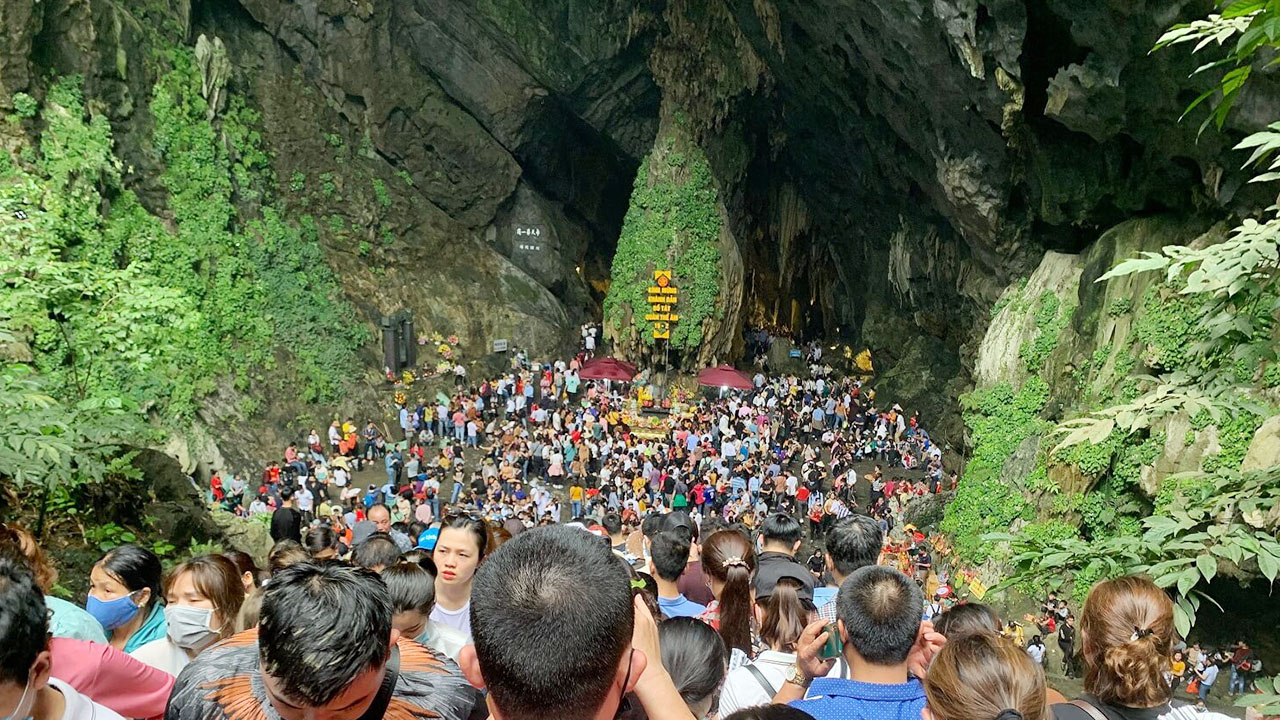
Comparison with Other Pagodas
The pilgrimage to the Perfume Pagoda offers profound personal and communal experiences, yet it finds shared ground with other Buddhist sites while also boasting unique differences worthy of exploration.
Similarities with Yen Tu Pagoda
When comparing the Perfume Pagoda to Yen Tu Pagoda, a sacred Buddhist site in Quang Ninh Province, parallels lie in their historical and spiritual depth which anchor them to Vietnamese religious culture. Both sites provide lush natural tableaux that intricately intertwine with impressive religious architecture.
Similar Features:
- Pilgrimage Significance: Both sites are central to Buddhist pilgrimage in Vietnam, drawing visitors seeking spiritual rejuvenation and fulfillment.
- Natural and Architectural Fusion: Each marries the beauty of its surrounding landscape with temple structures, creating peaceful sanctuaries for meditation and reflection.
- Cultural Heritage: Yen Tu and Perfume Pagodas embed themselves in the broader tapestry of Vietnamese history, offering narratives that span dynasties and connect generations.
Though they share these core values, Yen Tu is frequently recognized as the cradle of Vietnamese Zen Buddhism, while the Perfume Pagoda is celebrated for hosting the prolific Spring Festival.
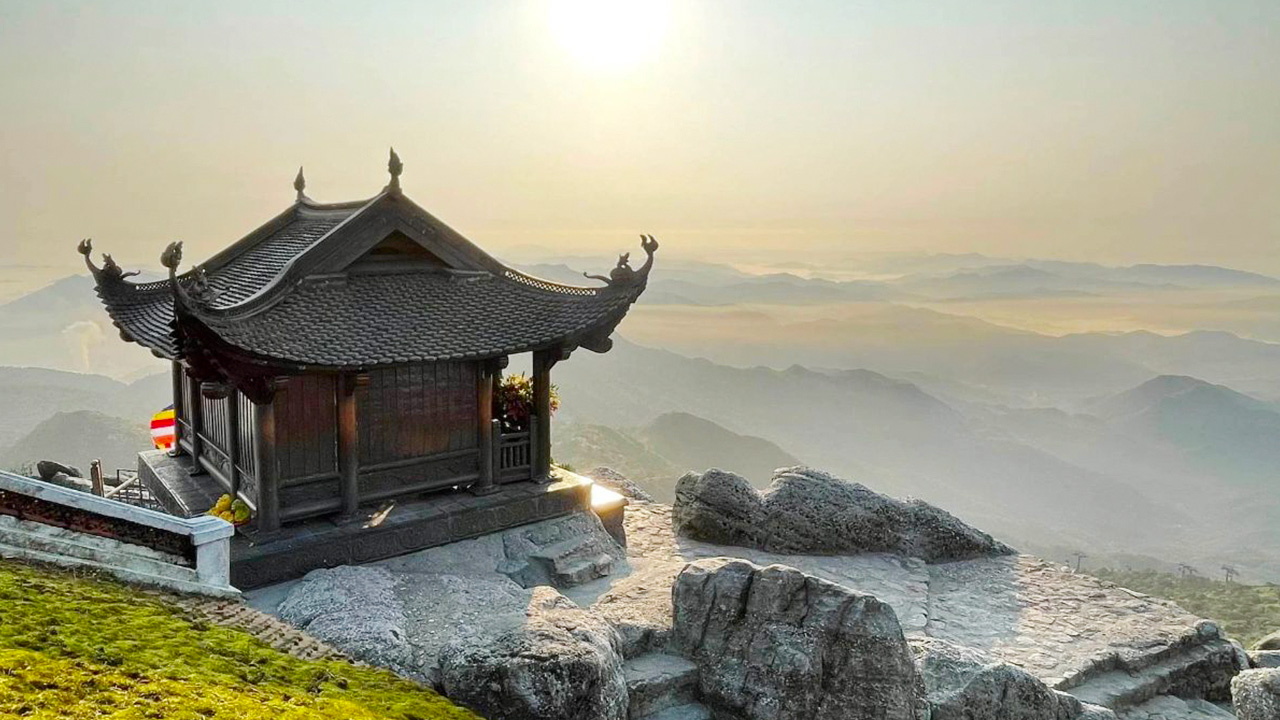
Unique Aspects Compared to Thien Mu Pagoda
Distinct from its counterpart, Thien Mu Pagoda offers a different cultural and spiritual narrative. Located in Hue, Thien Mu is intrinsically linked with the Nguyen Dynasty its iconic seven-tiered tower stands as a historical and architectural marvel.
Contrasting Features:
- Historical Significance: Thien Mu’s ties to the imperial capital of Hue emphasize its role in Vietnam’s dynastic past, while the Perfume Pagoda’s prominence speaks more to broad-based Buddhist devotion and celebration.
- Location and Accessibility: Thien Mu’s placement along the Perfume River presents an urban retreat within Hue’s city limits, unlike the Perfume Pagoda’s remote mountain locale, accessible via pastoral waterways.
- Architectural Focus: The Perfume Pagoda’s structures meld with cave environments, emphasizing natural integration, whereas Thien Mu showcases classical, vertical architectural designs exemplified by its symbolic pagoda.
Together, these pagodas reflect the rich diversity in Vietnam’s spiritual and architectural landscape, each contributing significantly to the overarching narrative of cultural and religious identity.
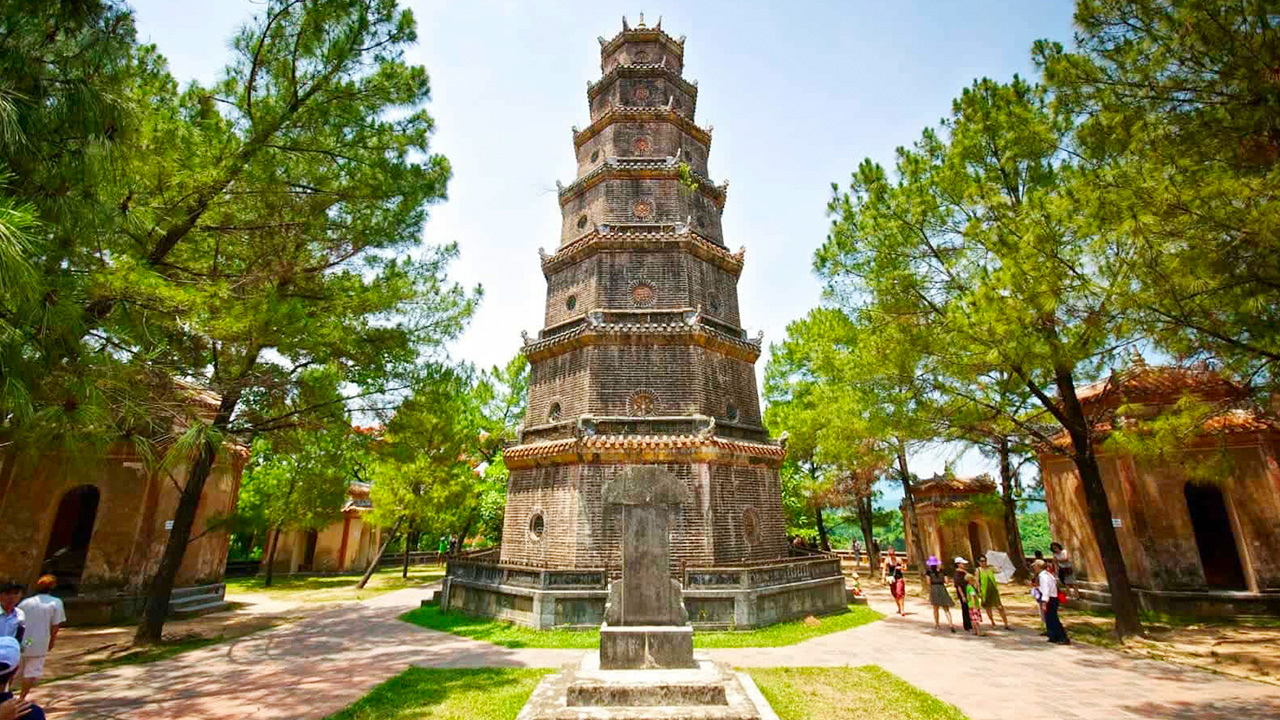
FAQs
- What is the best time to visit the Perfume Pagoda?
- The ideal time to visit is during the annual Perfume Pagoda Festival from January to March, though visiting in the quieter months offers a more serene experience.
- How can I reach the Perfume Pagoda?
- The Pagoda is best accessed from Hanoi Old Quarter, involving a combination of road travel and a boat ride along the Yen River.
- Are there any entry requirements for visitors?
- Visitors should dress modestly and be prepared for both religious ceremonies and the physical hike to the sites.
- What distinguishes the Perfume Pagoda from other Vietnamese pagodas?
- Its unique integration with natural caves and the vibrant spring festival distinguish it from others, offering a fusion of spiritual, cultural, and natural beauty.
- Can visitors participate in the rituals at the Pagoda?
- Yes, visitors are welcome to engage in offerings and rituals, gaining deeper insights into local Buddhist traditions.
Key Takeaways
- The Perfume Pagoda combines stunning natural landscapes with sacred architecture, reflecting Vietnam’s spiritual ethos.
- Legends surrounding the site lend it a mystical allure, enhancing its historical narrative.
- It remains a key site for Buddhist practice, symbolized yearly by the vast Perfume Pagoda Festival.
- Offers visitors a comprehensive cultural experience through rituals, local cuisine, and vibrant festivals.
- Maintains important historical, spiritual, and cultural ties that connect it with other significant Vietnamese pagodas.
Watch the video summarizing the article “Perfume Pagoda: Explore Vietnam’s Iconic Spiritual Haven”
Conclusion
The Perfume Pagoda, or Chùa Hương, is a quintessential reflection of Vietnam’s spiritual and cultural heritage, a sacred site harmoniously nestled among the Huong Tich mountains’ natural splendor. It hosts an annual pilgrimage that transforms it into a vibrant epicenter of Buddhist faith, drawing both pilgrims seeking divine blessings and visitors eager to immerse themselves in its serene beauty and rich traditions. The Perfume Pagoda becomes a confluence of history, culture, and spirituality, embodying the enduring legacy of Buddhism within the Vietnamese consciousness. Whether navigating its historic legends or partaking in lively festivals, each journey here leaves an indelible mark on the soul, connecting all who visit with a timeless sense of peace and reverence.


